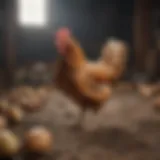Effective Strategies for Removing Mice Nests Safely
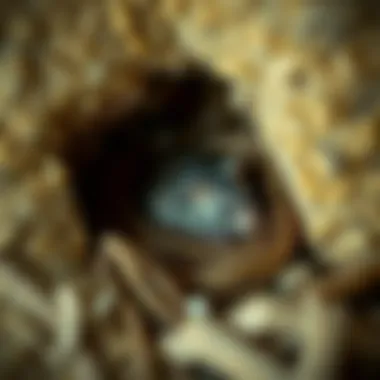
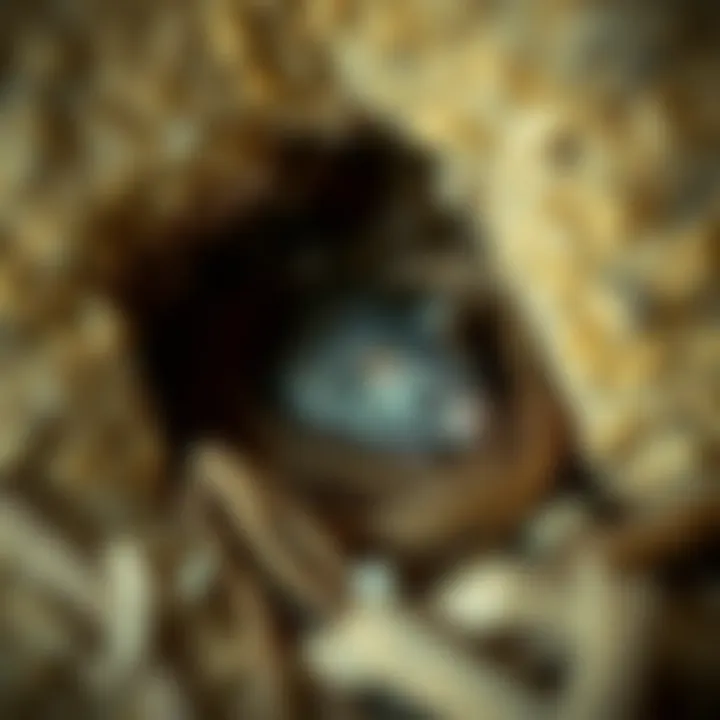
Intro
When it comes to managing the unwanted presence of mice in our homes, understanding their behavior is key. Mice, particularly the house mouse (Mus musculus), have adapted to coexist with humans, often nesting in our attics, walls, or even cupboards, if the conditions are right. They might seem small and harmless, but the impact they have on a household can be significant, given their ability to reproduce rapidly and the health risks they pose through diseases they can carry.
Recognizing mouse nests and understanding where they like to settle is pivotal for anyone wishing to keep a clean and healthy environment. This article will walk you through effective strategies for identifying these nests, removing them safely, and ensuring that your space remains free of future infestations. We’ll delve into practical preventive measures, behavior insights, and long-term control tactics that can turn your home into a fortress against these pesky intruders.
Let’s break it down and get started.
Prologue to Mice Infestation
Mice infestations are more than just an inconvenience; they can lead to significant health risks and property damage. Understanding the gravity of this issue is the first step in taking effective measures against these unwelcome guests. Mice are masters of survival, capable of thriving in a human environment, and if left unchecked, they can multiply at alarming rates, escalating a small problem into a full-blown infestation quickly.
The first thing to consider is the impacts that mice can have, particularly in residential homes. They do not just chew on food packaging; their tendency to gnaw through electrical wires can lead to fire hazards. Moreover, mice are known carriers of various diseases, such as hantavirus, leptospirosis, and salmonella. Thus, it’s crucial to deal with infestations promptly to protect your health and safety.
Another critical element in addressing a mouse infestation is understanding their habits and behaviors. Mice are nocturnal creatures and tend to come out when homes are quiet, making detection tricky. They build nests in dark, undisturbed areas, which could be in wall cavities, attics, or under appliances. Knowing where they like to hang out helps in identifying potential nests and can expedite removal efforts.
The benefits of effectively addressing a mice infestation extend beyond just immediate removal. By learning about mouse behavior and nesting patterns, homeowners reduce the chances of future infestations, creating a safer and more sanitary home environment. It offers peace of mind, knowing that proactive measures are in place to deter these rodents.
“An ounce of prevention is worth a pound of cure.” This saying holds particularly true when it comes to tackling mice infestations.
Understanding Mouse Behavior
Understanding the behavior of mice is pivotal to effectively addressing their presence in our homes and environments. Recognizing how mice act, what they prefer, and where they tend to nest can significantly influence the success of removal strategies. Mice are creatures of habit; they thrive in familiar surroundings, making it essential for us to comprehend their routines and preferences. This knowledge enables us to approach the situation with informed strategies rather than relying solely on generic solutions.
Social Structure and Nesting Habits
Mice are not solitary animals. In fact, they form complex social structures rooted in familial bonds. A mouse colony typically consists of a dominant male, several breeding females, and their offspring. This social dynamic plays a crucial role in their nesting habits.
When it comes to nesting, mice prefer dark, quiet, and secluded spaces where they can raise their young and feel safe from predators. In homes, they are often found in attics, basements, or behind appliances, making use of materials such as shredded paper, fabric, or insulation to create cozy nests. Understanding these nesting preferences allows homeowners to identify potential nesting sites, facilitating both removal and prevention strategies.
- Key Takeaways:
- Mice live in social groups, which influences nesting behavior.
- Familiar environments are crucial for their survival and breeding.
- Knowledge of nesting habits aids in targeted removal efforts.
Dietary Preferences
Mice are omnivorous creatures with a versatile diet, which often leads them into human spaces in search of food. Their food choices range widely from seeds and grains to fruits and even pet food. Mice have a curious nature and are known for their ability to explore various food sources, often scavenging whatever they can find.
This dietary flexibility means that any household can inadvertently become a buffet for mice if food is left out or improperly stored. To minimize attractants, it's vital to secure food in airtight containers and promptly clean up any spills.
- Notable aspects of mouse dietary preferences include:
- Mice are drawn to carbohydrate-rich foods and grains.
- They favor human food scraps and pet food, especially if left unattended.
- Recognizing dietary habits helps in preventing infestations by limiting food availability.
By comprehending these behaviors, homeowners can proactively address mice problems. Knowing their social dynamics and food preferences empowers us to implement strategies that deter them before an infestation even begins.
Identifying Signs of a Mice Nest
Identifying signs of a mice nest is a crucial first step when dealing with an infestation. Recognizing these indicators not only helps in confirming the presence of mice, but also assists in determining the extent of the problem. By understanding what to look for, you can take timely action to mitigate any damage caused by these unwelcome guests. Ignoring the signs can lead to higher cleanup costs and a more profound infestation.
Physical Signs in the Home
There are several physical signs that can indicate a mice nest is nearby. The most common evidence are droppings, which are small, dark, and grainy. If you notice these droppings scattered in hiding places – under kitchen appliances, in cupboards, or around food sources – it’s a red flag that mice are active in your space. Another clue is the presence of shredded paper, fabric, or insulation. Mice often use these materials to build their nests. So, if you spot what looks like a mini garbage heap in a corner or tucked away in a closet, it might just be a nest-building site.
Additionally, look for greasy smudge marks along walls or baseboards. Mice have oily fur, which can leave behind marks where they frequently travel. If you're vigilant, you might also find small burrows or holes in walls or flooring. These entry points can signal a more alarming issue – a whole colony.
Summary of Physical Signs:
- Dark, grainy droppings
- Shredded materials (paper, fabric, insulation)
- Greasy smudge marks on surfaces
- Small holes or burrows in walls and floors
Auditory Indicators
Apart from visual signs, listening can be just as telling when it comes to identifying a mice nest. Mice are nocturnal creatures, and their creaking and gnawing sounds often come alive at night. If you hear scratching noises coming from your walls, ceiling, or even under the floorboards, there’s a high chance you're dealing with mice.
The high-pitched squeaks and scurrying sounds are quite distinctive. Pay attention during quiet moments—these sounds can serve as an early warning system. Also, if you have pets, their behavior may indicate rodent presence; if your cats or dogs seem unusually focused on specific areas or are frequently sniffing around, it warrants further investigation.
Listening closely gives you a leg up in the battle against mice. Their sounds can be your earliest warning sign.


Summary of Auditory Indicators:
- Scratching noises in walls, ceiling, or floors
- High-pitched squeaks
- Unusual pet behavior, such as sniffing or tracking
Being informed about these auditory and physical signs can assist any homeowner or tenant in addressing a mice infestation quickly and effectively. Once you identify the signs, you can prepare to take the necessary actions, ensuring you're not left in the lurch when it comes to your living space.
For further reading on mouse behavior and signs, consider visiting these resources:
- Wikipedia on Rodent Control
- National Pesticide Information Retrieval System
- CDC Rodent Control Guidelines
Assessing Infestation Severity
Understanding the severity of a mice infestation is critical in determining the appropriate course of action. It's not just about noticing a few droppings or the occasional rustling in the walls. Grasping the full scope of the problem can lead to more effective and targeted removal strategies, saving both time and effort in the long run. Moreover, recognizing the scale of the infestation helps in assessing potential damage to your property and maintaining health standards within your living environment.
Identifying how extensive the infestation is can help you avoid overreacting or underestimating the situation. If you've merely spotted a couple of mice here and there, it could represent just the tip of the iceberg, or it might be a sign of a larger issue developing. Conversely, an overwhelming presence of mice demands immediate attention.
Small Infestations Versus Larger Colonies
Small infestations often differ significantly from larger colonies in terms of handling and outcomes. In a small infestation, you might find a few mice—perhaps a nest or two in the corner of a rarely-used pantry. This situation can often be resolved with simple traps and some cleanliness adjustments.
On the other hand, large colonies may populate multiple areas within a home. These mice might be burrowing behind walls, taking residence under floorboards, or even populating dark corners of the attic. The key indicators of larger infestations include:
- Increased droppings found in various rooms.
- Sightings of mice during the day, which is unusual since they are primarily nocturnal.
- Signs of gnawing on wires, furniture, or food packets.
The consequences of larger colonies go beyond just finding nests; they can lead to significant property damage and health risks due to diseases carried by mice. For a homeowner, this means potentially higher costs—both in pest control measures and the damage inflicted. Recognizing the scale helps in prioritizing whether you can manage it alone or require the expertise of professionals.
Nesting Locations and Impact
Where mice choose to build their nests significantly impacts both the removal process and the overall severity of the infestation. Mice have a knack for selecting cozy spots that are often out of sight and difficult to reach. Common nesting locations include attics, basements, behind appliances, and within wall cavities.
The impact of these locations is twofold. First, the further a nest is from your everyday activities, the easier it might be to overlook during an inspection. Ignoring hidden nests allows the population to grow unchecked, embedding themselves deeper into the fabric of your home.
Second, the location also dictates potential damage. For instance, mice nesting behind appliances could lead to fires if they chew through electrical wires. Nests built in your pantry can wreak havoc on food supplies, contaminating everything they touch. Hence, a thorough examination of all nooks and crannies—especially areas where you may not typically venture—becomes crucial.
To conclude, knowing the degree of infestation and the potential nesting sites prepares you for a more effective eradication strategy. By staying alert and proactive, you pave the way for a healthier living space, free of unwanted guests.
"An ounce of prevention is worth a pound of cure."
For further information and guidance, you might find these resources helpful:
- Centers for Disease Control and Prevention: Mouse Infestation
- National Pest Management Association
- US Environmental Protection Agency: Rodent Control
By taking these steps, you will not only deal with the present problem but also set the stage for long-term solutions.
Preparation for Nest Removal
Before diving into the intricate task of removing a mice nest, preparation stands as the bedrock of a successful operation. This stage is not just about gathering tools—though that’s a big part of it—but also about making sure the environment is ready for action. The importance of proper preparation cannot be overstated. When you take the time to lay the groundwork, you significantly enhance the effectiveness of your removal efforts, reduce stress and chaos during the process, and ensure your own safety throughout.
Gathering Necessary Tools
Having the right tools isn’t just a minor detail; it’s essential to achieving a successful mice nest removal. The tools you gather will not only make the process smoother but also help you tackle any unexpected challenges that may arise.
Protective Clothing
Protective clothing plays a crucial role when dealing with mice nests. It acts as a barrier, keeping you safe from potential allergens and harmful pathogens found in droppings and urine. One key characteristic of good protective gear is its breathability, allowing for comfort while still providing you with that all-important shield. For example, a high-quality pair of gloves can prevent direct contact while you handle the nesting material, reducing the risk of contamination. In addition, a mask can protect your respiratory system from inhaling any dust or microscopic particles released during the process. However, selecting the right kind of protective clothing can be tricky. Bulkier options might provide more coverage but can also be cumbersome, so striking a balance between safety and mobility is key.
Cleaning Supplies
Once the nest has been carefully removed, the cleaning supplies come into play. Cleaning supplies are vital for eliminating any traces of the infestation. A good all-purpose cleaner can effectively neutralize many of the lingering odors and bacteria left behind. The main characteristic to look for in cleaning supplies is their effectiveness against pathogens, not just dirt. Products that are labeled as anti-bacterial are particularly beneficial in this regard. One specific advantage of these cleaner types is their ability to break down organic matter, which can help in cleaning spaces that mice frequently access. However, some cleaners may have strong chemicals, which could necessitate additional precautions if you're sensitive to such ingredients.
Disinfection Products
Following the cleaning phase, disinfection products come next. These are no ordinary cleaners; they are formulated to eradicate stubborn germs and viruses that might still linger even after cleaning. A key feature of effective disinfection products is their broad-spectrum efficacy, meaning they are effective against a wide variety of pathogens. Selecting a product that has been verified by health organizations can be reassuring. The unique advantage of disinfectants is their ability to provide a lasting clean, reducing the likelihood of recontamination after the nest removal. Nevertheless, it’s essential to be cautious, as some disinfectants require specific dwell times – the length of time they must sit on surfaces to effectively kill germs – so be sure to follow instructions closely.
Preparing the Environment
A vital step that cannot be ignored is preparing the surrounding environment. The area where the mice have nested should be organized and devoid of obstructions, which not only facilitates easier removal but also mitigates any risk during the process.
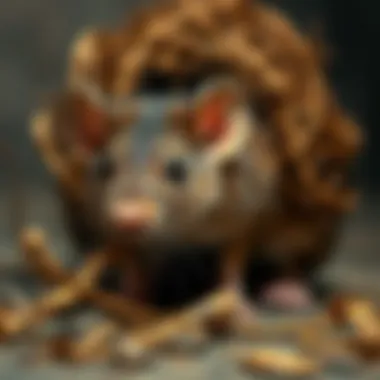

Clearing Clutter
Clearing clutter is an often-overlooked step but one that offers significant benefits in the nest removal process. It creates a more manageable space to work in and minimizes pathways that mice might use to escape or reclaim their territory. Being methodical in your clearing efforts can also reveal hidden entry points, giving you a better understanding of how to fortify those areas later. An advantage here is the psychological aspect: a tidy environment helps you approach the task with a clearer mind.
Securing Food Sources
Securing food sources effectively strips away the incentive for mice to return. An essential aspect of this step involves wiping out any available food in the vicinity that might attract them back. This means securing food in airtight containers and cleaning up spills immediately. The hallmark of this approach lies in its preventive nature, actively dissuading mice before they even think of returning. One advantage is that by taking this proactive stance, you lower the chances of reinfestation after you’ve successfully removed the initial nests.
The steps you take to prepare for nest removal have lasting repercussions for maintaining a pest-free environment. By setting the scene properly, you not only enhance your own safety but also make the entire process more efficient.
Methods for Safe Nest Removal
Removing mice nests is crucial not only for maintaining a hygienic living space but also to prevent future infestations. Incorrect removal methods can lead to the spreading of allergens and diseases, making it essential to approach the task with care. Therefore, employing safe and effective techniques ensures both personal safety and the humane treatment of the animals. Understanding how to remove a nest can significantly reduce potential health risks while fostering an environment that discourages rodents from returning.
Manual Removal Techniques
Manual removal involves physically locating and removing the nest with minimal disruption. Here are some steps to follow:
- Locate the Nest: Often, nests are tucked behind appliances, inside walls, or beneath floorboards. Common signs include shredded paper or fabric, along with droppings.
- Wear Protective Gear: Before you start, put on gloves and a mask. This prevents direct contact with droppings or urine, which can harbor harmful pathogens.
- Gather Materials: You’ll need a sturdy garbage bag, a vacuum cleaner with a HEPA filter, and possibly a flashlight to see into dark corners. Using a vacuum cleaner can help trap particles without scattering them around your home.
- Remove the Nest: Gently scoop the nest into a garbage bag, sealing it tightly to contain any remaining scents or particles. If the nest includes bedding materials like cotton or paper, it’s important to dispose of these items thoroughly.
"Remember, thorough cleanliness is vital—this includes disinfecting the area after removal to eliminate lingering odors that may attract new rodents."
- Clean the Area: After removing the nest, clean the area with a disinfectant. Be sure to follow safety precautions when using chemicals. This not only removes any scent markers but also discourages other mice from moving in.
Using Natural Deterrents
Once the nest is removed, consider employing natural deterrents that can do wonders in the long run. Some reliable methods include:
- Peppermint Oil: Mice detest strong smells. Sprinkling cotton balls soaked in peppermint oil around the area can repel them effectively.
- Vinegar: A mixture of vinegar and water is also known to keep mice at bay. Spray it around potential entry points regularly.
- Ultrasonic Repellents: Devices emitting high-frequency sounds can deter rodents without causing harm to them or pets.
Using natural methods appeals to animal lovers and environmental enthusiasts alike. Not only are these solutions often safer for the family, but they can also be quite effective as a part of a comprehensive pest control strategy.
When to Consider Professional Help
Sometimes, despite the best efforts, the task may become overwhelming or potentially dangerous. Here are indicators that it may be best to call in professionals:
- Severe Infestation: If you've seen large numbers of mice or their nests in several locations, it can be a clear sign of a bigger problem.
- Location Issues: If nests are in hard-to-reach places or inside walls, the knowledge and tools that professionals possess can be invaluable.
- Health Concerns: If anyone in your household has allergies or pre-existing conditions, professional help is a safer route. They can use industry-grade products and techniques to ensure effective removal without risking your health.
In short, while manual methods can be effective, sometimes bringing in the big guns is necessary for a clean slate. Assess your situation carefully and choose what’s best for your home and family.
Post-Removal Actions
After successfully dealing with mice nests, the next crucial step lies in post-removal actions. This phase is not just about cleaning up; it is fundamentally important for two primary reasons: to maintain a sanitary environment and to prevent future infestations. Taking the time to address these areas can save homeowners a significant headache down the road.
Cleaning and Disinfecting
Once the nests have been removed, cleaning and disinfecting the affected areas should be your top priority. This task goes beyond merely tidying up; it’s about ensuring that any lingering bacteria or pathogens from the mice and their droppings are eradicated. Mice can carry diseases, and their waste can contaminate your living space.
Begin by gathering appropriate cleaning supplies such as gloves, masks, and disinfectants. A mixture of warm water and soap can help break down any residues. Then, use a disinfectant spray—preferably one that is effective against viruses and bacteria
- Removing Wet or Dry Droppings:
- Surface Disinfection:
- Deep Cleaning:
- Use a damp paper towel to carefully pick up droppings, avoiding kicking up dust.
- Dispose of any waste in a sealed garbage bag to ensure it doesn’t contaminate other areas.
- Wipe down surfaces with a suitable disinfectant. Pay close attention to corners, closets, or any hidden spots where mice tend to nest.
- Ensure you follow instructions on the disinfectant label for effective usage.
- Steam cleaning carpets and upholstery can help eliminate potential bacteria. Make sure it is done regularly, particularly in areas often frequented by mice.
This meticulous approach to cleaning can clear out potential pathogens and create a cleaner, healthier space.
Monitoring for Reinvasion
Once you’ve done the heavy lifting with cleaning, the work doesn't stop there. Monitoring for reinvasion is an essential follow-up action. Understanding that mice can be quite persistent will prompt you to remain vigilant over the following weeks and months.
- Frequent Inspections:
- Implementing Deterrents:
- Setting Up Traps:
- Involving Professionals:
- Schedule routine checks in areas where you found previous signs of infestation. Look for droppings, gnaw marks, or new nests.
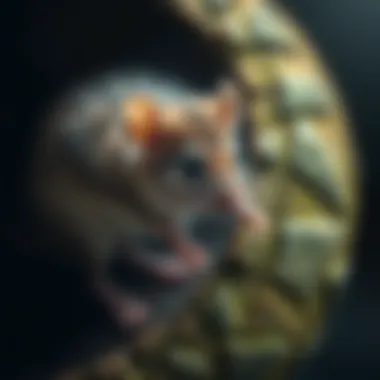
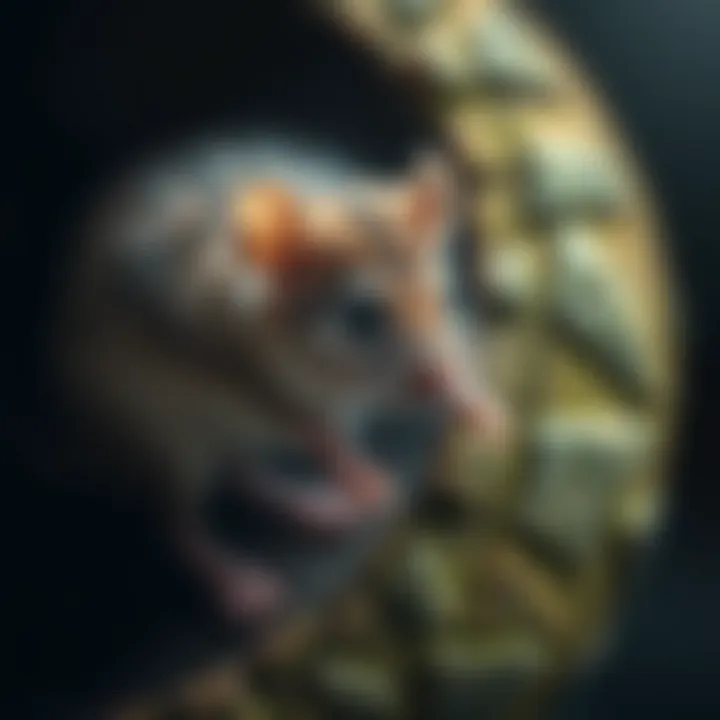
- Natural deterrents like peppermint oil can be used around entry points as an ongoing repellent. Mice dislike strong scents, so using them in various forms can help ward them off.
- If you detect signs of mice again, lay snap traps or humane traps in areas of interest. Be sure to check them daily.
- Should reinfestation occur despite your efforts, consider reaching out to pest management experts. They can assess the situation, provide advanced solutions, and help eliminate rodents effectively.
Monitoring your home following nest removal isn’t just a precaution; it’s a necessary practice to ensure that a recurrence doesn’t happen. Staying proactive makes all the difference in safeguarding your space.
By following these detailed steps in post-removal actions, homeowners can both restore and protect their living environment from future mouse infestations. A little diligence goes a long way in ensuring your home remains mouse-free.
Preventing Future Infestations
Preventing future infestations is not merely an afterthought; it is a critical component in maintaining a pest-free environment. After going through the rigors of removing mice nests, ensuring that these creatures do not return should be a top priority. Implementing effective preventive measures can shield your home from unforeseen invasions, enhancing both safety and sanitation. Beyond the immediate relief of mice removal, these strategies foster long-term peace of mind, saving homeowners both time and money in the long run. Let’s break down the most effective methods to keep these little pests out for good.
Environmental Modifications
Sealing Entry Points
Sealing entry points is a fundamental step in the battle against mice infestations. Mice, small as they may be, can slip through the tiniest cracks and gaps. By systematically inspecting your home, particularly at foundation lines, around windows and doors, you can easily identify vulnerabilities. The key characteristic of sealing entry points is that it acts as a barrier, stopping potential invaders in their tracks.
What makes this approach effective is its simplicity and accessibility. Homeowners can uses various materials such as steel wool, caulk, or expanding foam to seal gaps. Interestingly, one unique feature of this method is that it serves a dual purpose; while it keeps mice out, it also aids in insulation, which can reduce energy bills. However, care must be taken to ensure that the sealing materials used do not pose harm to pets or children. In summary, sealing entry points is a strategic choice for pest control that integrates safety and practicality.
Landscaping Changes
Landscaping changes can play a crucial role in an overall pest prevention strategy. Tall grass, unkempt shrubs, and cluttered yards can serve as inviting habitats for mice, so modifying your landscape can diminish this appeal significantly. The key characteristic of this approach is its promotion of a neat and tidy outdoor environment. This not only discourages mice but also improves the aesthetic appeal of your property.
One compelling aspect of landscaping changes is that it allows for the implementation of natural barriers. For instance, placing gravel or larger stones around the perimeter of your home can act as a deterrent, as mice would find it challenging to navigate through such terrain. However, it is essential to note that major alterations to landscaping can require investment of time and money. Yet, the long-term rewards of a mouse-free home make such changes worthwhile. Integrated with other strategies, landscaping effectively fortifies your defenses against future infestations.
Regular Home Maintenance Practices
Regular home maintenance practices cannot be overlooked in the quest for a pest-free living space. This encompasses a variety of tasks—the importance of which is often underestimated. Ensuring that your home remains clean and well-kept can significantly reduce the chance of mice taking up residence. Simple habits like routinely cleaning behind appliances, ensuring proper waste disposal, and regularly checking for leaks are fundamental.
Regular maintenance also involves more proactive measures such as keeping the garage organized and avoiding clutter build-up in the shed. Mice tend to thrive in neglected areas, and by maintaining an orderly and hygienic home environment, homeowners can drastically lower their chances of a re-infestation. These habits form an ongoing commitment to creating a safe environment, solidifying your home as a no-go zone for pesky invaders.
"An ounce of prevention is worth a pound of cure," and when it comes to mice, proactive measures can save a lot of headaches down the line.
Humane Considerations in Pest Control
When it comes to dealing with mice in our homes, many may feel compelled to opt for quick and aggressive measures. However, it is crucial to consider the humane aspects of pest control. Understanding and respecting the lives of these creatures is not just an ethical standpoint but can also lead to more sustainable and effective solutions in the long run.
From the perspective of ethics, humane removal practices offer a way to address infestations without resorting to lethal methods. This approach can not only save the lives of the mice but can also reflect positively on one’s personal values and contribute to a more eco-conscious lifestyle. Moreover, it fosters a deeper understanding of their role in the ecosystem, which is essential for those of us who are animal lovers or wildlife enthusiasts.
In addition, taking a humane approach to pest control often involves implementing long-term solutions, which can reduce the likelihood of recurring mouse issues. Employing methods that allow for coexistence rather than combat can lead to more harmonious living spaces.
Ultimately, the goal of humane pest control is to create an environment where humans and wildlife can peacefully coexist. This not only alleviates the stress of dealing with an infestation but also encourages a healthier perception of the wildlife that shares our space.
"Humans are not the only inhabitants of this world; learning to coexist is part of our responsibility."
Ethical Removal Practices
Ethical removal practices primarily entail using methods that do not cause undue harm or suffering to the animals involved. These strategies can range from simple traps that capture mice alive to interventions such as relocating the nests in a safe and suitable environment away from human dwellings. Here are some important practices to consider:
- Live Traps: These traps allow for the capture of mice without causing harm. It's essential to check these traps regularly to minimize stress for the captured animals.
- Use of Natural Deterrents: Employing natural substances like peppermint oil can discourage mice from nesting in certain areas without harm.
- Speak to Professionals: When in doubt, contact wildlife removal services that prioritize humane practices. It is often worth it to invest in expertise that honors both your needs and the wellbeing of the animals.
It's also fundamental to remember that every action has consequences. Making choices that favor ethical practices reflects a growing societal shift towards compassion and mindfulness.
Long-term Solutions for Coexistence
The concept of coexistence not only applies to the immediate situation of mouse removal but also to proactive measures that can prevent future infestations.
- Environmental Modifications: Making adjustments around your home can significantly reduce the appeal for mice. Strategies like sealing cracks, eliminating standing water, and maintaining a clean environment can deter them from settling in.
- Education: Understanding the biology and behavior of mice can further aid in establishing coexistence. For instance, knowing their dietary habits can help homeowners properly store food and waste to remove temptations.
- Natural Biodiversity: Encouraging natural predators, such as barn owls or even cats, can create a balanced ecosystem. This can lead to a reduced mouse population without the necessity for drastic measures.
In summary, a thoughtful approach that marries humane practices with effective strategies can pave the way for not only safer homes but also a healthier environment. Adopting this mindset not only benefits the animals but promotes a broader understanding of our surroundings. By choosing to practice humane pest control, individuals can play a part in fostering a sense of community that includes all living creatures.
Closure
Wrapping up, this article has illuminated the multifaceted approach to effectively tackle the challenge of mice nests within our homes. Understanding the importance of mice control isn't just about removing a nuisance; it concerns health and safety and preserving our living environment. Mice are more than mere pests; they can be carriers of diseases and can cause significant damage if left unchecked. By grasping the underlying behaviors of these creatures, we can not only react to infestations but also preemptively fortify our homes against potential breaches.
One of the standout elements discussed here is the necessity of a safe and humane removal of these nests. This isn't just about killing; it’s about ensuring the long-term wellbeing of both the human occupants and the mice populations in the wild. Techniques noted include effective cleaning processes after removal, which allows for a return to a sanitized living space, free from the traces these small creatures leave behind.
Taking proactive measures, as highlighted in the section on prevention, allows us to create an inhospitable environment for mice. This includes monitoring food sources and sealing entry points. Such actions aren’t merely reactive but rather shifts in our lifestyle that promote a more harmonious coexistence with local wildlife while safeguarding our homes.
"An ounce of prevention is worth a pound of cure."
In closing, this guide has sought to empower readers—whether they are homeowners, wildlife enthusiasts, or just curious individuals—with knowledge and actionable strategies. You now have the tools to combat mice infestations effectively and humanely. Following these recommendations will foster a safer, cleaner, and more pleasant living space, which ultimately benefits us all.
